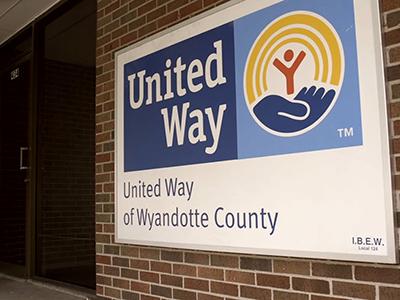
The United Way of Wyandotte County conducted a Needs Assessment. They began this by describing their community (Wyandotte County). Secondary sources of data that informed their assessment included data from the U.S Census of Population and Housing and data from the Kansas City Business Journal. They determined the percentage of population by age group, race and ethnicity, per capita income, and percentage of households by income groups. They then compared these data figures with five other counties in the Kansas City Metropolitan area.
The needs assessment ultimately identified 11 different areas of concern to Wyandotte County residents. These identified issues included abuse, neglect, support for families, basic needs, basic skills, and child youth and development. For each of these concern areas they used various methods to measure the problem, such as surveys, secondary data, and small group forums. For the issue area of abuse, neglect, and support for families, the United Way began characterizing the level of the problem. This was done by using the "Metro Kansas City: The Status of Children in the Five-County Area Report Card" to determine the number of reports of child abuse and neglect for three previous years. The next step was to measure the community's perception of the problem. They then measured the community's perception of the problem by administering a Needs Assessment Survey, in which they had community members rate both the importance of these issues and their satisfaction that the community was addressing those issues effectively. Following the survey, the United Way conducted neighborhood focus group discussions. The United Way divided the community into four geographic areas and residents were invited to attend. The residents chose topics to discuss and made potential suggestions for solutions. The United Way also gathered primary data through a service providers' forum, in which they gathered information from 60 members of the Wyandotte County Social Service Alliance regarding gaps in service and potential solutions.
All of this information was compiled into briefs for each issue area.
ISSUE BRIEF
Abuse, Neglect, and Support for Families and Individuals
SUMMARY
Wyandotte County residents are concerned about abuse, neglect, and support for families and individuals. In general the number of reports of child abuse and neglect cases has declined slightly in Wyandotte County. Issues related to abuse, neglect, and support for families and individuals were rated "important" to "very important" by respondents to a needs assessment survey, who were in general "neutral" to "unsatisfied” with how the issues were being addressed in the community. Discussions with community members and service providers indicated that abuse, neglect, and support for families and individuals are associated with families "falling through the cracks." Participants noted that counseling is expensive and underutilized, and adults lack support to parent effectively. Potential solutions suggested by community members and service providers included providing help in the home, providing support and information to families through churches and hotlines, and providing information on available resources.
NEIGHBORHOOD FOCUS GROUP DISCUSSIONS:
Focus Groups were conducted to gather community feedback on the 11 broad issues addressed by the Needs Assessment Survey. The meetings were held in four areas of the County: South Wyandotte County, Northeast Wyandotte County, Bonner Springs/Edwardsville, and West Wyandotte County. Participants selected a few of the 11 issues for in-depth discussion.
DIMENSIONS OF THE ISSUE:
Abuse, neglect, and support for families and individuals was selected as a topic for discussion at the Bonner Springs/Edwardsville and the West Neighborhood Focus Groups. Participants explored a wide range of issues related to abuse, neglect, and support for families and individuals. Section IV of the Needs Assessment Report lists all dimensions discussed.
A few dimensions of the issue discussed included:
- Adults lack support to parent effectively; Abuse is a growing problem;
- Families "fall through the cracks";
- Counseling is expensive and underutilized;
- Both physical abuse and mental abuse are a problem.
POTENTIAL SOLUTIONS:
Focus Group participants also discussed a wide range of potential solutions to the problem of abuse, neglect, and support for families and individuals. Section IV of the Needs Assessment Report lists all potential solutions discussed.
Some selected comments from the discussion of potential solutions included:
- Provide help in the home
- Provide programs that allow families to work and be successful
- Provide support and information to families through churches and hotlines
- Provide information on available resources
SERVICE PROVIDERS' FORUM:
A Service Providers' Forum gathered information from approximately 60 members of the Wyandotte County Social Service Alliance on issues from the Needs Assessment Survey. Participants selected four issues for in-depth discussion. Participants represented a variety of human service organizations from County, State, and private sectors. Participants discussed the dimensions of each problem, and gaps in service, and were asked to posit solutions regardless of how much money they would cost. Many ideas were explored in the Forum. Section V in this report provides a complete list of the ideas generated. Participants at the Forum discussed abuse, neglect, and support for families and individuals in Wyandotte County and explored gaps in services. The issues raised were similar to those discussed at the Focus Groups.
A few highlighted problems and gaps in services included:
- No flexible round-the-clock crisis management
- Lack of cultural-language-specific service providers
- No long-term graduation of services to help families become fully independent
A few of the potential solutions discussed included:
- Intensive case management services;
- Training in how to negotiate red tape and bureaucracy.



